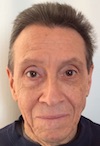 [Shortly after the Berlin Wall came down in November 1989, the Musée de l’Elysée in Lausanne, Switzerland, then a relatively new museum specializing in photography, announced an ambitious plan to bring together the works of dozens of eastern European photographers in a massive group show the next summer.
[Shortly after the Berlin Wall came down in November 1989, the Musée de l’Elysée in Lausanne, Switzerland, then a relatively new museum specializing in photography, announced an ambitious plan to bring together the works of dozens of eastern European photographers in a massive group show the next summer.
I’d met Charles-Henri Favrod, founding director of the Musée, along with his second in command, Philippe Lambelet, at the Arles photo festival in July 1989. We’d discussed assorted possibilities for collaboration, which went on hold once the undertook this project. But they invited me to attend, promising to pay my travel expenses and cover my lodging and food.
The travel stipend never materialized; I ended up paying my own way to and from the event. At the time, I had multiple outlets for my writings, here and abroad, so I amortized a small slice of the expense by syndicating the report below. It appeared first in the December 1990 issue of Photo Metro, a Bay Area “little” magazine in which I published a regular column, then later in several other journals. I offered a version of the story to Kathy Ryan of the New York Times, but they passed on it.
Given the free flow of people, books, periodicals, and images that now exists between eastern Europe and other countries, facilitated by a new infrastructure there (schools, museums, festivals, publishing houses, magazines, websites), it’s hard for anyone accustomed to the present state of affairs to imagine how things looked and felt just before and just after this transition. Perhaps my report captures something of the spirit of that moment. Part 2 appears below; click here for Part 1. — A. D. C.]
•
Letter from: Lausanne, No. 19 (continued)
… In fact, the show opened with Gottfried Helnwein’s “Selektion,” a memorial to Kristallnacht: 16 enormous laser-scanned color portraits of cadaverous-looking children, eyes closed, faces coated with white powder. Mounted outside the Palais de Beaulieu, they greeted visitors from across the plaza. As one got closer, one could see horizontal cuts across the bottom of each; some unnamed person had systematically slashed the throats of these images when the installation was first mounted in Cologne.
This elegiac mood was one of the show’s diegeses, a thread connecting the East German Richard Peter’s grisly reportage of Dresden after the February 1945 bombing with the enlarged contact strips — 15 images in all — showing the consummation by fire of the steeple of St. Peter’s Church in Riga as the result of German bombing on June 29, 1941, by Vilis Ridzenieks of Lithuania; linking the Russian Aljona Frankl’s black & white documentation of the present-day Jewish community of Budapest and Tomasz Tomaszewski’s color studies of Polish Jewry with the retrospective photomontage meditation “Time in Auschwitz” by Waldemar Jama of Poland and Benedykt Jerzy Dorys’s never-before-seen account of shtetl life in Kazimierz nad Wisla, Poland, in the years 1931-32; binding the Pole Wieslaw Vistan Brzoska’s installation, “Entropy” — a darkened space containing semi-eradicated images of faces on its walls, low platforms with the outlines of bare feet on the floor, piles of old shoes and valises, and a dusty view camera on a tripod, evoking some departure point for parts unknown — with the official portraits of anonymous consignees to the gulags; and merging Bernard Grzywacz’s three dozen 1950s Leica snapshots of Vorkuta, the gulag in which he was incarcerated, with Tomasz Kizny’s “rephotography” of that hellhole from earlier this year.
This commemorative impulse could be found elsewhere in the show as well. There were the image-text pieces of Modris Rubenis of Lithuania, portraits of people created by layering snapshots and old letters; his countryman Egon Spuris’s bleak, gritty studies of the workers’ quarters of Riga, constructed in the 19th century; and the too-brief selection from Sandor Kardos’s obsessive one-man operation, the “Horus Archives,” a repository for found images of Hungarian life — mostly amateur snapshots — with which Kardos is constructing a vernacular history of his nation in a venture directly related to Dave Heath’s “Un Grand Album Ordinaire” and the curatorial experiments of Paul Vanderbilt.
This is not to say that all Eastern European photographers are trapped in the past; for example, little of this intruded directly into the 15-print retrospective devoted to Edward Hartwig’s work between 1928 and 1989. Hartwig, born in Moscow in 1909, now lives in Warsaw; his relation to that city might be likened to Joseph Sudek’s with Prague, for, like Sudek, Hartwig explored all modes of black and white experimentation from pictorialism to modernism.
There was wit and humor to be found, in the droll fantasies of Czechoslovakia’s Miro Svolik and the fey Duane Michals-influenced image-text sequences of Mariusz Hermanowicz, a Polish expatriate now living in France. Playfulness and testing of the potentials of the medium’s materials manifested themselves in work from Hungary (Agnes Eperjesi’s exploration of selective development and painting with developer, Istvan Halas’s montages and solarizations), Czechoslovakia (Kamil Varga’s tableaux with added light drawing a la Barbara Morgan), Poland (Krzysztof Pruszkowski’s in-camera multiple exposures in which dozens of variants on the same subject — Warsawites waiting on line for bread; tombstones in Warsaw’s Jewish cemetery — are superimposed onto each other, like a pre-digital Nancy Burson), and elsewhere.
There was formalism from Poland’s Krzystof Cichosz and Hungary’s Gabor Medvigy; minimalism from “Anonymous of Prague,” two collaborators whose installation consisted of grainy street-level panoramas of storefronts; conceptualism from Poland’s Zbigniew Tomaszczuk (“Leçon d’Esthetique,” 1987, in which 5 scenes are shown with and without the presence of the photographer and his family) and East Germany’s Michael Sheffer (an enigmatic installation titled “For Kurt, 1987-1990”); and even postmodernism (in Cibachrome, no less) by the Czech Pavel Mara.
Yet it all seemed informed by pain: the pain of the distant past, of the recent past, of the present — even the anticipated pain of the difficult immediate future. Medvigy’s Siskind-like abstractions were patterns found in highly carcinogenic soot that fell on Budapest in 1989; Cichosz’s seemingly subjectless scratched and mutilated surfaces resolved into portraits of people who have “disappeared.”
If this sense of struggle could be felt underlying even the most formally radical work, it was visibly manifest in the reportage and documentary imagery: Pavel Nadvornik’s confrontational, interrogative 12-print suite on the transvestites of Prague; Joseph Koudelka’s 1960s visions of gypsy life and images of “Prague Spring”; Lenke Szilagyi’s odd, sad glimpses of women and children; Pavel Stecha’s images from a ward for alcoholics, their faces in his large black and white prints splashed with blood-like red enamel paint; Sergei Podlesnov’s gripping, world-class photojournalism from crises in Armenia, Afghanistan and elsewhere; Gerhard Kiesling’s traditional but evocative project on the working lives of East German miners; Emilian Savescu’s “Night of December 21 and after,” concerning last year’s events in Romania; Wilhelm Mikhailovsky’s “Condemned to Death,” a bookwork that follows a petty criminal from trial to death row; Stanislaw Markowski’s extensive coverage of strikes and street actions in Czechoslovakia dating back to 1981, done with an eye for the telling detail and the intimate moment in a public event; Garo Keshishian’s tough studies of Bulgarian forced-labor conscripts.
To be sure, much of all this work — little of which has been seen in the West, and some of which has never been exhibited before — was celebratory. But if there was exultation here, it was a joy earned through suffering, flavored with rage. I was reminded of the creature in the desert Stephen Crane comes across in one of his poems, eating his own heart, relishing it “Because it is bitter,/And because it is my heart.” In the end, I found myself thinking that most of us in the West — even Western Europeans — simply have no idea of what it has meant to be Eastern European in this century, for even those who lived there are only now able to acknowledge it. There’s a long period of reeducation ahead for all of us; and the paper trail we’ll have to follow is strewn not only with sheets bearing the written word but with photographs of all kinds, like these.
Compared to the probing, in-depth examinations that the Eastern European photographers had achieved in their documentary projects, most of what was presented in the Libération/VU exhibit — by such as Leonard Freed, John Vink, Raymond Depardon and Didier Lefevre — seemed sympathetic but superficial. An exception was Carl de Keyzer’s “Homo Sovieticus,” 70 black & white prints from large-format and panoramic negatives produced in the U.S.S.R. during 1988-89. Mostly addressing people at leisure or at play, at public festivities or celebrations, these sumptuous prints of densely-layered images scrutinized dress, gesture, social interaction and the function of visual images as mnemonic training devices in totalitarian cultures. Intelligent as sociology and powerful (though uneven) as imagery, this show occupied the entire upper floor at the Theatre de Vidy; the book version subsequently won the Prix du Livre at the Arles festival.
Yet, looked at from another standpoint, the Western European photographers had often made more provocative imagery as such; for example, there was a more participatory, eye-of-the-storm feeling to the outsiders’ coverage of political rallies and street actions than the Eastern photographers managed to convey. Some of this was clearly due to technical limitations: strobes, wide-angle and long lenses, good film, adequate color processing and other tools of the trade taken for granted in the West are still hard or impossible to come by in the East. But there was also a stylistic conservativism at work, as well as a discernible split between fine-art and photojournalistic/documentary practice even more severe than that which afflicts photographers in the West.
Looking at work by such Western exemplars as Eugene Richards, Sebastião Salgado, Mary Ellen Mark and Susan Meiselas, for example, it’s evident that they’ve attended to the full range of contemporary practice, including fine-art and commercial photography, absorbing some of its strategies (an activated frame, startling foreground/background relationships) and applying them to their own ends. This remains unthinkable in the East, where the two forms stand staunchly opposed in all venues, including photo-education contexts. That was brought home to me in a conversation with a Polish curator who went to great lengths to assure me that his institution neverneverNEVER showed anything that could be thought of as remotely related to social documentary or reportage.
This is unfortunate — not because these various forms should be conflated mindlessly, but because documentary in Eastern Europe is still afflicted with socialist-realism tendencies and the reportage is forthrightly stodgy. In the case of the former, this is not always a drawback; the long-term project undertaken by Ivan Lutterer, Jan Maly and Jiri Polacek is premised on the photographic tradition of the itinerant portrait photographer. With their portable studio in a van, and a supply of Polaroid P/N film, this team criss-crossed Czechoslovakia between 1982-89, making formal studio portraits of groups and individuals. Forty of these affectionate, unstylized images were shown in a small circus tent on the beach near the Theatre de Vidy, where they also operated their studio for the week.
Yet, on the whole, both forms seem sorely in need of the revitalization that could result from applying radical picture-making strategies to the subject matter of cultures in upheaval. And if those images are to compete in the international media environment, it will not be enough that they were made from within their culture rather than from without; they will also have to look as if they weren’t made forty years ago.
•
In brief, what had been accomplished by week’s end? The Western European press, and some major representatives of its photography community, had been introduced to a massive amount of imagery from the East — and to sixty of that work’s makers. Those sixty, in turn, encountered the West, many of them for the first time. Lectures, workshops, solo and group shows and other forms of exchange will result; some of the photographers who came to Lausanne cut book, magazine, postcard and exhibition deals on the spot. Quite a few of them took the opportunity to buy “small cameras and big lenses,” as one of them put it. All of them experienced Western-style presentation, and were offered the opportunity to have their work enter a significant Western European archive.
Friendships and professional contacts were established between the different Eastern European nations and outside their collective borders. And the long-term efforts of such visionaries as Czechoslovakia’s Anna Farova to preserve their countries’ photographic heritage and bring its present-day practitioners into the international dialogue were surely vindicated; in some ways this show was as much a triumph for Farova and her peers — a number of whom, including Farova herself, were present at the grand opening — as it was for the Musée.
What was missed? Not enough attention was paid to bringing the photographers together with each other, and with their colleagues from the West; more parties, more small-group sit-down dinners, and especially more translators were needed. There were insufficient public lectures, discussions and dialogues to contextualize the imagery and create a verbal record of the event in itself. Furthermore, an oral-history opportunity was simply overlooked; someone should have been interviewing each of these photographers for an hour or so, on audio- or videotape. [One photographer/videographer, Gérard Courant, created a series of silent video portraits of the attendees, myself included.] Press attention was not fully mobilized, nor was the publishing industry well-informed; there were book projects and ideas galore here that went unattended. A momentum was initiated but not adequately maintained.
In a flyer handed out at the exhibits, Favrod and Lambelet issued a call for such encounters to take place in Lausanne on an annual basis, with the Musée as host.* That’s a generous offer, and a great idea. But not enough of the framework is in place as of yet; the project has not been sufficiently thought through.
Still, one hell of a start has been made.
[*Note: No follow-up encounters among eastern European photographers took place there, alas. In 2000 Favrod and Lambelet ended up convicted of embezzlement. William Ewing, who succeeded Favrod as director, cleaned house and took the museum in a different direction.]
(Part 1 I 2)
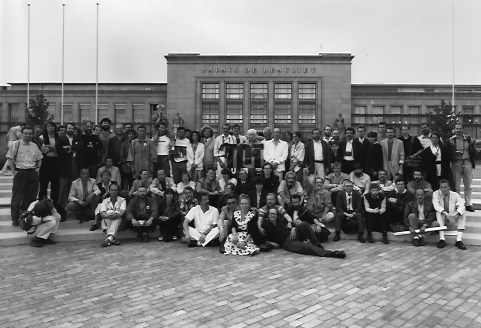
Jacques Straessle,”Eastern European photographers at the opening, Palais de Beaulieu, Lausanne,” June 15, 1990
(I arrived in Lausanne several days after this opening. Click here for Gérard Courant’s 4-minute silent “Cinematon” video group portrait of the attendees, made on the lawn of the Musée, June 19, 1990. I’m in the front row center of that one, in a white jacket.)
•
First published as Coleman, A. D., “Letter from: Lausanne, No. 19,” Photo Metro 9:85, December 1990, pp. 18-19. Republished, with slight revisions, as “Sense of Struggle: Lausanne Meets the East,” European Photography 12:2, April 1991, pp. 10-12.


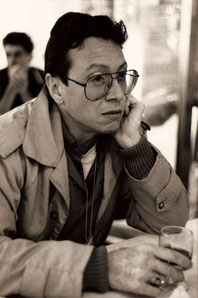
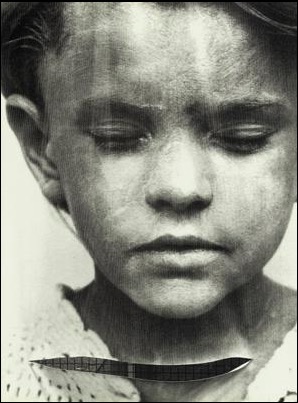
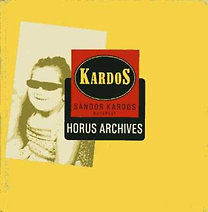
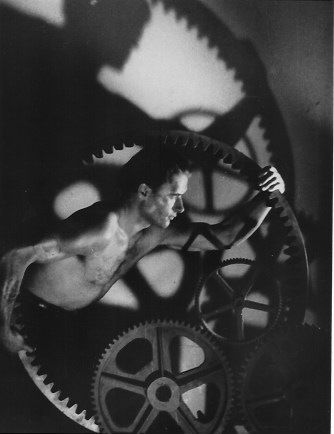
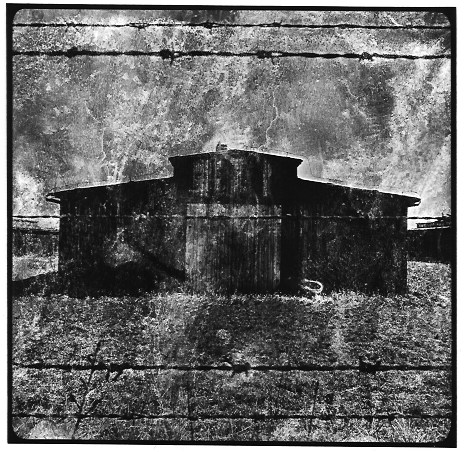
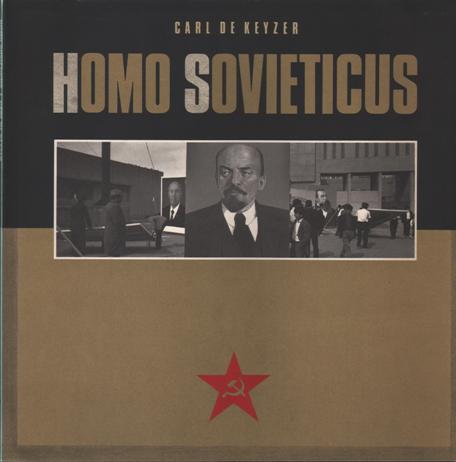
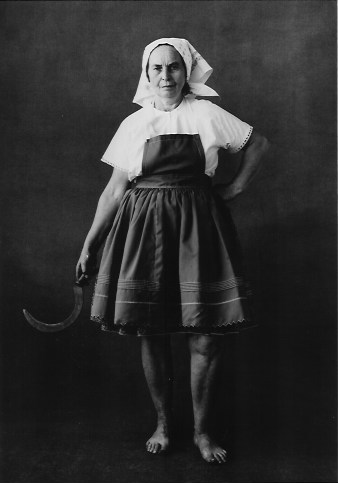
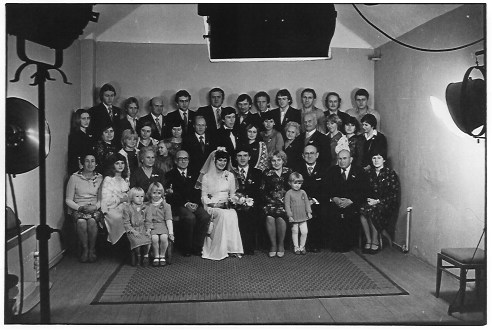




Leave a Comment